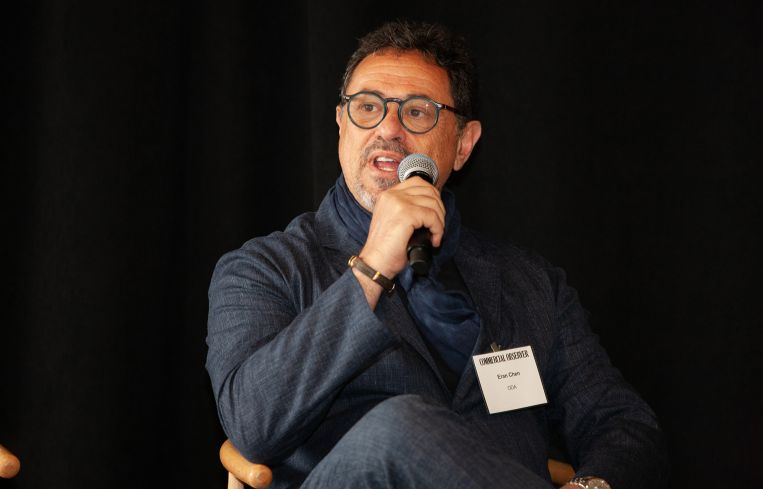Luxury Residential Developers Trying to Keep Up With Tenant Demands: Forum
By Mark Hallum May 29, 2025 4:19 pm
reprints
As the face and forces behind luxury residential development keep changing, panelists at Commercial Observer’s National Residential Development Forum held Wednesday at 350 Park Avenue outlined the many ways they’re keeping up with demands while anticipating opportunities.
First off, that means figuring out how the heck developers can even define luxury residential, considering some developments are branded as top-shelf even if they’re in what some would call bottom-shelf locations.
“We keep expanding the definition, and it’s interesting because you can drive around the world and see ads for luxury rental or condos in places that you wouldn’t even want to park your car,” Eran Chen, founder of ODA Architecture, said during the fireside chat with CO Editor-in-Chief Max Gross. “I don’t think the fundamentals have changed — great location, great product, etc. — but I think the marketing or how things are communicated to the buyer have really defined what we think luxury is … and what’s easy to communicate are tangible things that are quantifiable, like marble in the bathrooms or high-end appliances, Italian kitchens.”
But what luxury really boils down to for Chen are features like outdoor spaces, access to natural light and “unique living experiences.” These things are harder to market and eventually become overlooked by luxury residential builders, Chen said.
Essentially, developments with proper architectural features but basic furnishings can outsell the more decked-out spaces in poor locations and poor design, according to Chen.
The morning started off with the din from a dozen or so protestors at the foot of the Helmsley Building calling on Metro Loft Management founder and CEO Nathan Berman — a speaker at the forum — to meet with construction workers to negotiate a higher wage.
While their concerns hardly fell on the deaf ears, the blaring of their air horns and chanting scattered on the wind somewhere between the sidewalk and the 32nd floor of the RXR-owned Midtown tower, where the proceedings went more or less as planned.
Sandhya Espitia, chief operating officer of the Real Estate Board of New York, moderated the first panel, “The State of New York City’s Housing Market: Market-rate, Condo & Ultra-Luxe,” which featured Alchemy Properties founder and President Kenneth Horn, Ravi Kantha of SERHANT, Silverstein Capital Partners President Shawn Katz and Bizzi & Partners Managing Director Alessandro Pallaoro.
When it comes to the cyclical nature of New York City, the current state of the market is less important than when one chooses to build, according to Horn. But even that advice is not for everyone.
“We always believe that the best time to build in New York is counter-cyclically,” Horn said. “When no one is building, that’s when you build because your product will be delivered when there’s a scarcity of either condominiums or rental units.
“Right after COVID, it was very, very hard to locate any kind of capital, be it equity or debt to help finance projects,” Horn added. “That being said, the folks with experience were able to locate that capital.”
Whitney Arcaro, RXR’s executive vice president and chief revenue officer of residential, moderated the panel “Residential Reimagined: The Fusion of Hotel & Resi Concepts.” That panel featured Corcoran Sunshine Marketing Group’s Chief Marketing Officer Jasmine Mir, Flag Luxury Group COO Dayssi Olarte de Kanavos, Strategic Hotels & Resorts CEO Andre Zotoff and Vertical Developments CEO Fernando de Nuñez y Lugones.
When it comes to the ultra-luxury market, a building’s brand can be one of the most important components to get residents to call it home, especially for those looking for the highest levels of exclusivity in their lives. It’s a big selling point over unbranded developments.
“When we think of branded residences, I think the value proposition is that you are going to live this exclusive, curated lifestyle that you wouldn’t otherwise have if you were living anywhere else,” Olarte de Kanavos said. “When you look at a branded residence like a Ritz-Carlton or Four Seasons, you’re getting the guarantee of not just great service, but also great design, a great bathroom experience, of great amenities. … On top of that, you’re part of a global community.”
Gross led another fireside chat after a coffee and networking break, this time with Corcoran Sunshine Marketing Group President Kelly Mack, in which she said that despite the obvious economic pressures, the only short-term problem for residential will be in supply.
“If you look at the overall levels [of inventory] now and the demand continuing to go up, and you couple that with the fact that there’s 40 percent less development introduced into the market over the next three years,” Mack said, “I would say within a year we’re going to be looking at a very different market dynamic and a different marketplace despite whatever economic conditions there actually are.”
Andrew Wachtfogel, the managing principal of Redeavor Group, led the following discussion “How NYC Resi Is Faring Compared to Other Hot Markets: Challenges & Opportunities Across the Map.” On the panel were Neda Navab, president of Compass; Matthew Baron, founder and president of Baron Property Group; Amit Khurana, founding partner of Sumaida + Khurana; and KPF Principal Rebecca Gromet.
“The biggest opportunity I see is around a much more strategic approach to pre-marketing and pricing strategy,” Navab said. “In April of this year, price reductions were up 37 percent year-over-year from April of `24. That was the highest April in terms of percent of listings with one or more reductions in seven years, which speaks to the shift that we’re starting to see of power between sellers and buyers and speaks to the importance of pre-marketing strategy being able to test for an aspirational price before you go live.”
Belkin Burden Goldman partner Jason Hershkowitz led the final panel of the day, “The Strategies Behind the Most Successful Office-to-Residential Conversions,” with Metro Loft founder Berman, CetraRuddy Architecture Principal Brian McFarland, GFP Real Estate co-CEO Brian Steinwurtzel and One Wall Street’s Anna Zarro, who serves as president of sales.
Part of the success for the “puzzle” of a successful office-to-residential is being fully aware of just what you’re working with, and all its potential pitfalls, McFarland said.
“We like to say we’ve never seen a building we couldn’t convert; some buildings are tougher than others, large floorplates are an interesting puzzle that you have to solve for,” McFarland said. “The real thing is to know the bones of the building. We’re sitting here in what old-time New Yorkers would call the New York Central Building, and I can sit here and tell you how this floor would lay out based on its fenestration pattern, where solids are on the exteriors.”
Mark Hallum can be reached at mhallum@commercialobserver.com.



